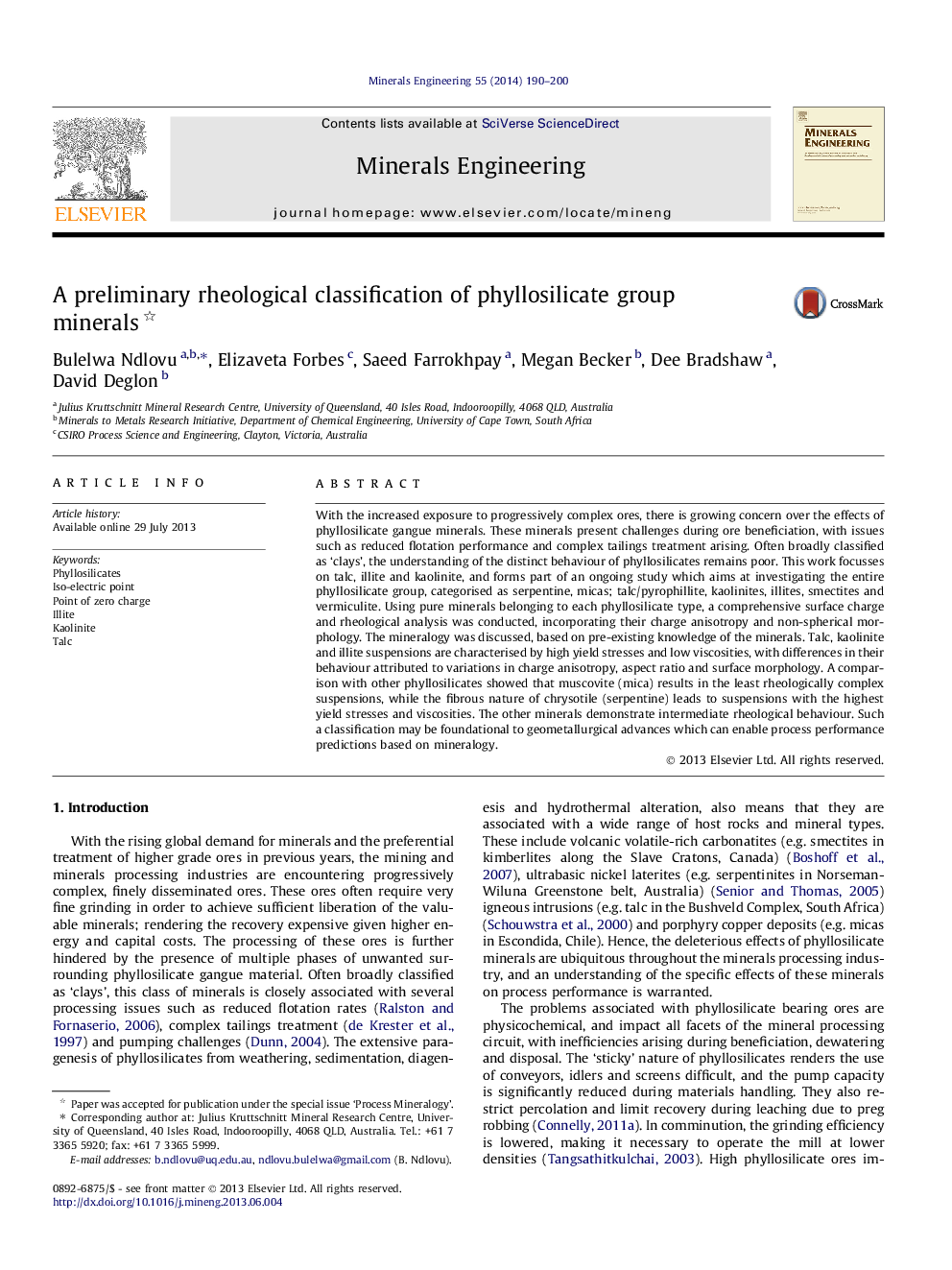| کد مقاله | کد نشریه | سال انتشار | مقاله انگلیسی | نسخه تمام متن |
|---|---|---|---|---|
| 233319 | 465333 | 2014 | 11 صفحه PDF | دانلود رایگان |
• The charge anisotropy and rheology of talc, kaolinite and illite is investigated.
• Charge anisotropy decreases in the order talc > illite > kaolinite.
• Suspension yield stress and viscosity decreases in the order kaolinite > talc > illite.
• Rheological differences due to variations in aspect ratio, surface area, crystallinity.
• Classification – chrysotile > smectites > kaolinites > talc > vermiculites > illite > micas.
With the increased exposure to progressively complex ores, there is growing concern over the effects of phyllosilicate gangue minerals. These minerals present challenges during ore beneficiation, with issues such as reduced flotation performance and complex tailings treatment arising. Often broadly classified as ‘clays’, the understanding of the distinct behaviour of phyllosilicates remains poor. This work focusses on talc, illite and kaolinite, and forms part of an ongoing study which aims at investigating the entire phyllosilicate group, categorised as serpentine, micas; talc/pyrophillite, kaolinites, illites, smectites and vermiculite. Using pure minerals belonging to each phyllosilicate type, a comprehensive surface charge and rheological analysis was conducted, incorporating their charge anisotropy and non-spherical morphology. The mineralogy was discussed, based on pre-existing knowledge of the minerals. Talc, kaolinite and illite suspensions are characterised by high yield stresses and low viscosities, with differences in their behaviour attributed to variations in charge anisotropy, aspect ratio and surface morphology. A comparison with other phyllosilicates showed that muscovite (mica) results in the least rheologically complex suspensions, while the fibrous nature of chrysotile (serpentine) leads to suspensions with the highest yield stresses and viscosities. The other minerals demonstrate intermediate rheological behaviour. Such a classification may be foundational to geometallurgical advances which can enable process performance predictions based on mineralogy.
Figure optionsDownload as PowerPoint slide
Journal: Minerals Engineering - Volume 55, January 2014, Pages 190–200
